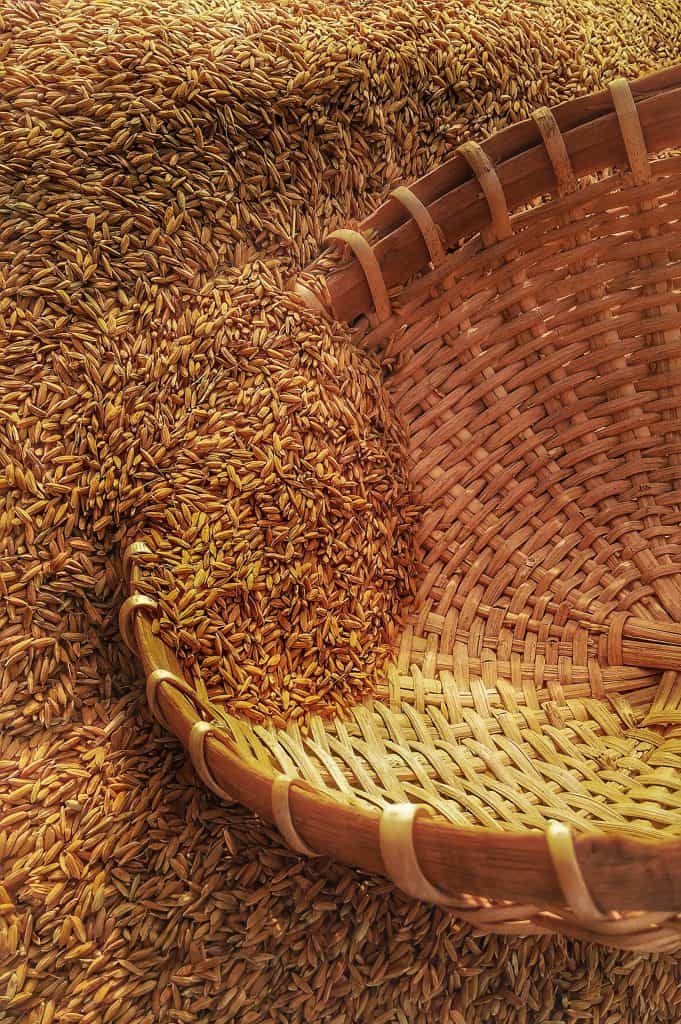
This site contains affiliate links to products. I may receive a commission for purchases made through these links at no extra cost to you.
Why should you eat whole grains when there are numerous “health authorities” telling you otherwise? This is an important topic that has been very confused in our modern society.
What Are Grains?
Grain is the harvested seed or fruit of grasses. Genesis 1:29 tells us that God gave Adam and Eve “every seed-bearing plant” for them to eat. There are over 80 Bible verses referencing grain, scattered throughout most books of the Bible. One thing I find fascinating is that grains are the seed of the plant as well as the fruit. This promises an abundance of nutrition.
Grains are annual plants. This means they have only one growing season per year, yielding one crop. Every growing season, grasses grow, reach maturity, produce seeds, and then die. Grains are harvested from dead, or dry, grasses.
What is a Whole Grain?
Whole grains contain all parts of the grain, which are:
- Bran: Bran is the hard outer coating of a kernel. It has most of the kernel’s fiber, and also has vitamins and minerals.
- Germ: The germ is the part that sprouts into a new plant. It is the smallest part by weight, but contains all the Vitamin E, other vitamins, fiber, and essential fatty acids.
- Endosperm: The endosperm is the energy supply for the seed, and mostly contains starches. It has small amounts of proteins and vitamins. The endosperm has very little fiber. This is what we know as white flour.
History of Grain Consumption
Boy, I can get on my soap box with this whole conversation. Dietary history can depend a lot on your worldview. As a Christian, I am also “young earth” meaning I don’t believe the earth is millions of years old. Many proponents of getting grain out of your diet also have an evolutionary perspective. Without fail if you read a book supporting either low carb, Paleo, or grain-free, the author will explain to you that millions of years ago people only hunted down meat. Or maybe they only ate what they hunted or foraged. They say that it’s only been around 10,000 years ago that people started cultivating grains or living agriculturally. Well, that number matches up more closely with what the Bible says. In Genesis, God told Adam to “work the ground,” and Cain (one of Adam and Eve’s sons) was a “cultivator of the land.” In other words, he was a farmer.
Only after the Great Flood did God permit eating meat. The first mention of bread that I could find was when Abraham brought bread to the three visitors (angels) that told him in his old age, his wife would bear him a son. This was around 1900 B.C.. Around 2500 B.C. we have records of ancient civilizations that grew grain. So basically, since the beginning of time, people have not only consumed, but sometimes lived on a heavy grain diet.
Today, people all over the world consume some form of grain. I did a search that asked, “Is there any society on earth that doesn’t eat grain?” The results were somewhat comical- every article that popped up was “why you should avoid grains,” “the problem with grains,” “the grain-free diet”…. you get the idea. Grains have been vilified, and the answer to the question I asked is basically NO societies exist that don’t eat some form of grain.
Looking at these societies, the lowest amount of grains consumed are in Asia Pacific at 9.7 grams per day per person, up to 160 grams per day per person in some parts of Africa. To put that in perspective, North Americans consume around 49 grams per day per person. I would argue that sadly, most people here are not consuming the whole grain.
Examples of Whole Grain
- Amaranth
- Barley
- Buckwheat
- Bulgur
- Corn
- Einkorn
- Farro / Emmer
- Freekeh
- Kamut
- Millet
- Oats
- Quinoa
- Rice
- Rye
- Sorghum
- Spelt
- Teff
- Triticale
- Wheat
- Wild Rice
Health Benefits of Whole Grains
Since the 1980s when the Food Pyramid gave grains the prominent bottom base of the triangle, people have heard the health claims of making grains the foundation of a diet. You have probably already heard it can help lower cholesterol, risk of heart disease, diabetes and stroke. But there are surprising other benefits:
- Liver support: Research from 2013 links starting your day with oatmeal being supportive of liver function. A follow-up study in 2014 confirmed the findings of a protective role for whole grains in nonalcoholic fatty liver disease by decreasing liver inflammation. In the same study, eating refined grains was associated with increased risk of the disease.
- Reduced blood pressure: The American Journal of Nutrition reports a study that reveals a diet rich in whole grains reduces blood pressure equal to that of blood pressure lowering medication. Medications reduce risk of heart attack by 15% and risk of stroke by 25%. Last I checked, there were no negative side effects as there are with medications. 🙂
- Inflammation: This one is my favorite to tell you about because it flies in the face of what you’ve probably been told. How many times have you heard that “grains are inflammatory?” There have been many popular books written just on this premise. But what does research say? There are several markers of inflammation in the body used on blood work, the most common being CRP (which stands for C-reactive protein). CRP rises in response to inflammatory insults in the body. Well, good news! Research shows that for each serving of whole grain is estimated to reduce CRP concentrations by about 7%! The same results can be found in other inflammatory markers, such as ALT and GGT.
- Obesity: Eating 3 servings of whole grains daily was linked to lower body mass index (BMI) and less belly fat in a review of 15 studies in almost 120,000 people. Most experts believe this is due to the fiber found in whole grains. Fiber can help fill you up, while also providing benefits such as bulking up stool to prevent constipation.
This is post one of a six-part post on grains. I hope you’ll come back to read more. Subscribe below so you don’t miss more valuable information in this series!

